Properties and features of percale for bed linen
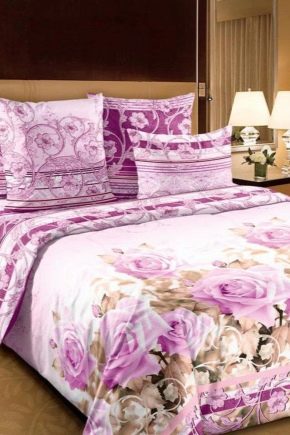
A soft bed with linen pleasant to the body is a guarantee of a sound and comfortable sleep. Deserved popularity among consumers is a thin cotton fabric called percale. In Russia, it is placed on a par with such well-known materials as satin and silk.
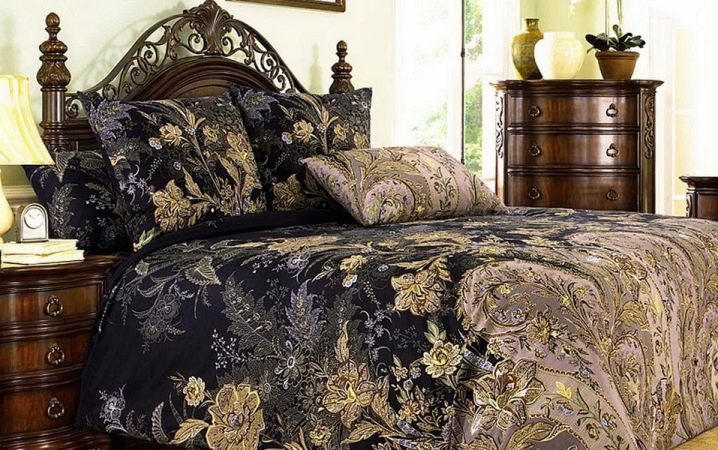
General characteristics and composition of textiles
Percale is a cotton fabric made from untwisted combed fibers. At the manufacturing stage, each thread is treated with a special adhesive, so that the fabric becomes smooth, even, durable and glossy.
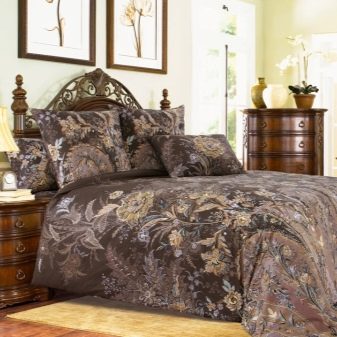
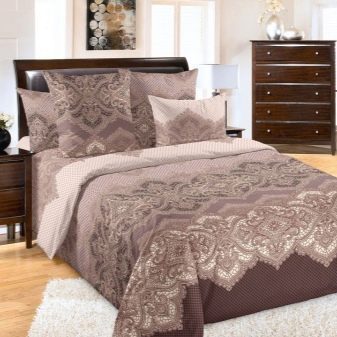
Many people don't understand how glue and bedding are related. Consumers are invariably faced with the question of environmental safety and softness of such matter. Their fears are completely in vain - the glue used in the manufacture of percale is absolutely chemically neutral, it does not in any way affect the skin or cause irritation. Moreover, the presence of such a component is not felt in any way when falling asleep. The fabric is delicate and airy, so you can safely purchase sleeping sets made of this material.
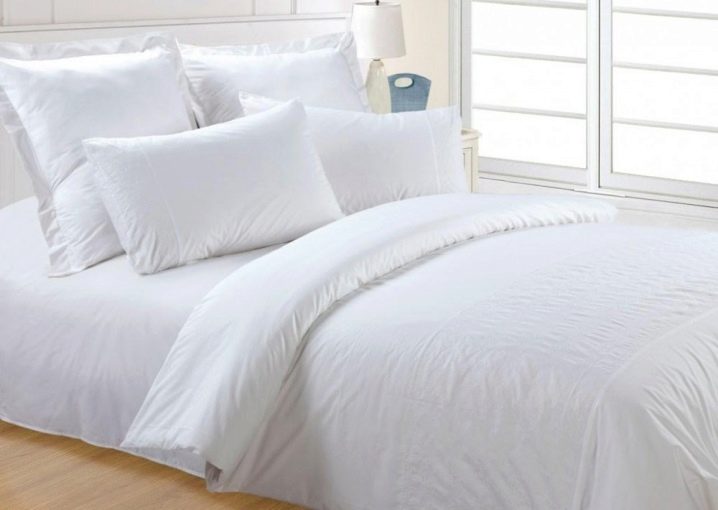
Percale has extremely high performance parameters:
- high density and strength;
- smooth texture;
- tenderness and softness;
- hypoallergenic;
- environmental friendliness.
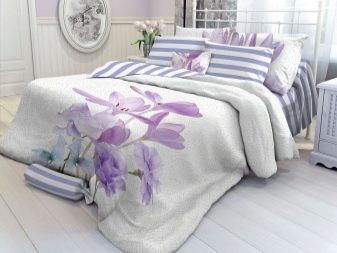
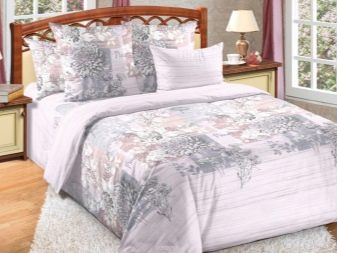
In addition, percale does not allow feathers and down to pass through, so mattresses, blankets and pillows are often sewn from it. Such a set of advantages of the material is explained by the peculiarities of its production.
First of all, as already mentioned, untwisted fiber is used in the manufacture of percale. This allows you to apply absolutely any patterns to the fabric, due to which the fabric, as a rule, is distinguished by a variety of designs and colors. To make the canvas denser and stronger, the threads are carefully sizing. By the way, this at the same time gives them softness and smoothness, thanks to which the fabric causes an extremely pleasant tactile sensation.
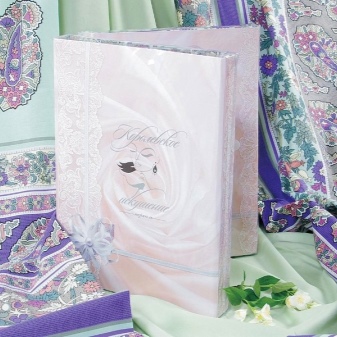
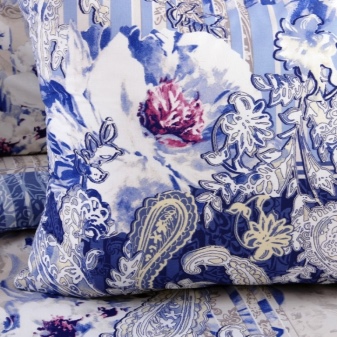
Modern industry produces two types of percale:
- household dense - a material that is used when sewing bed linen, bedclothes, as well as other home textiles (tablecloths, blankets, etc.), having a density of at least 115 g / sq. m;
- technical canvas - used for the manufacture of tents, as well as parachutes and awnings.
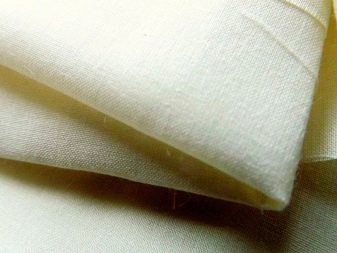
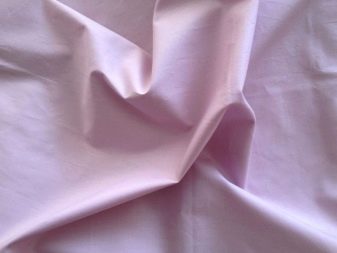
The most famous type of technical material is harsh percale. It has a lower density than the household version, which varies from 70 to 105 g / sq. m. Due to such a low indicator, it cannot be used for the manufacture of pillow cases and mattress covers, since not only down and feathers, but also synthetic pillow fillers can easily slip through it.

pros
Numerous reviews of housewives who preferred percale when purchasing bedding sets testify to its exceptional characteristics. First of all, it is practically unique strength, due to which the linen can be used for several years.

Percale is distinguished by a smooth texture, a pleasant-to-touch surface and softness that provides a comfortable and full sleep, promotes rapid falling asleep. The surface of the cloth is very smooth, lint-free, and is characterized by high throughput. Consequently, the material is "breathable", that is, it allows air to pass through without creating a "greenhouse effect".It is important that in winter the fabric heats up quickly and retains heat for a long time, and in summer, on the contrary, maintains a pleasant coolness.
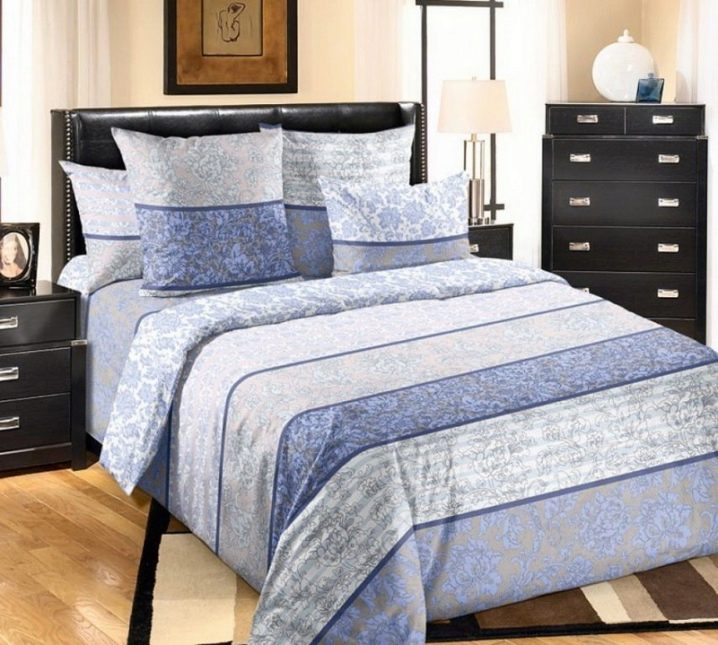
Percale is hygroscopic - it absorbs and retains sweat, tears and saliva well, so it can be recommended even for young children. The material is 100% cotton, therefore it does not cause allergies and does not accumulate static electricity.

Percale bed linen is characterized by increased wear resistance. The material can withstand up to 1000 washes, keeping the color and texture unchanged. At the same time, the drawings are not erased, they do not become faded. The matter itself is matte. That is why products made from it look great regardless of color.

The special way of weaving the threads prevents the formation of pills, all sorts of puffs and folds. Thanks to this, the canvas retains its tenderness and softness even after prolonged use. In addition, the adhesive solution that holds the threads together is characterized by exceptional bonding properties. As a result, the canvas shrinks by no more than 2%.
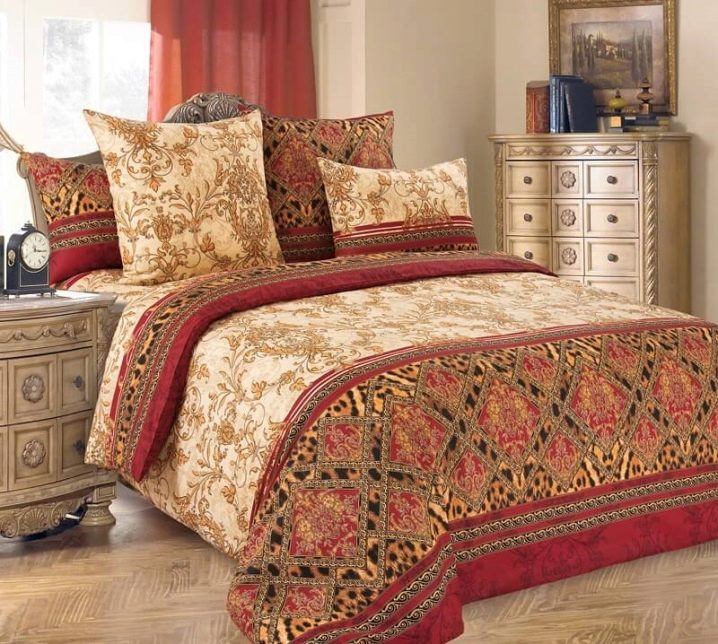
Minuses
Unfortunately, the ideal fabric has not yet been created, and even percale, with all its many advantages, is no exception. The material also has disadvantages. The most serious of them is the high price of the finished product. The cost of bedding sets is an order of magnitude higher than products made from other types of cotton linen. For example, a 1.5-bedroom set can cost up to 20 thousand rubles, while this fabric cannot be called unpretentious.
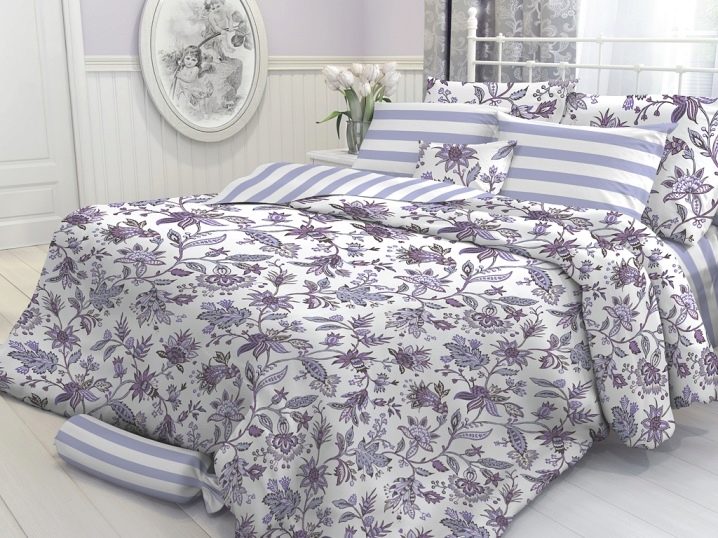
Percale does not tolerate strong abrasives, it is capricious in relation to hard water. Any of these factors can lead to significant deterioration and deformation of the web. There is no way to regain the lost appearance. All that remains for you is to admire the photograph of previously beautiful textiles.
What is the material used for?
India is considered the birthplace of percale, where a special technique of weaving threads was first mastered. However, the mass production of percale began only in the 17th century in France, where the canvas was used to make ship sails. For this, it was additionally coated with oil.

Percale has long been regarded as a purely technical material. It was used in industry and even in aviation (until the middle of the last century, it was often used for the interior cladding of aircraft). Today this stage is far behind, people prefer to rest on such a canvas, rather than admire it in the sky.
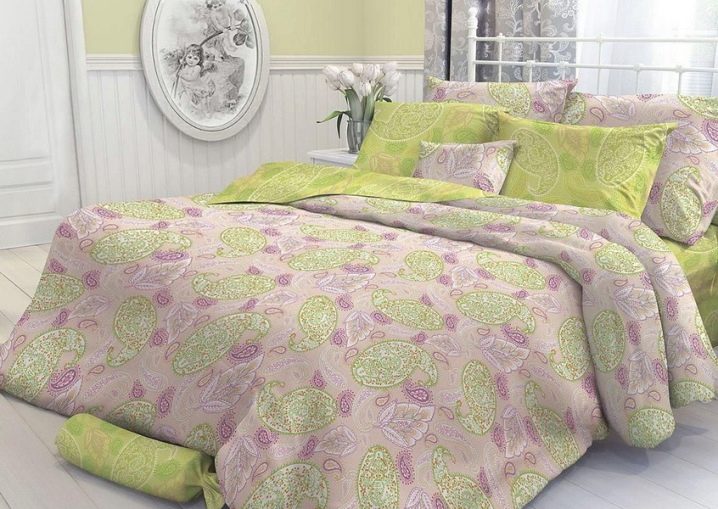
That is why today the main sphere of using percale has become the sewing of bedding sets for the home, as well as for public places (elite hotels and recreation centers). It is very prestigious to have linen textiles at home under the unusual name percale these days. Its presence testifies not only to the exceptional taste, but also to the rather high wealth of the owner.
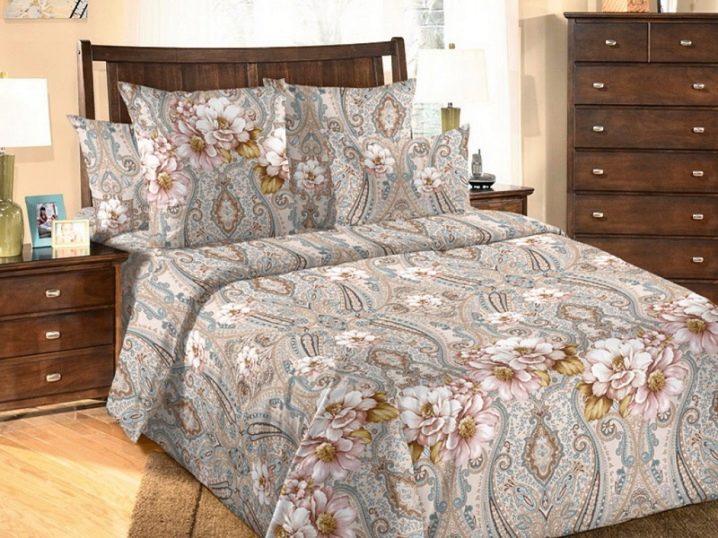
In previous years, the palm in the production of percale belonged to France. Today in Russia such underwear is represented by the products of manufacturers from Portugal and Italy. Not so long ago, domestic enterprises began to produce percale, which launched the production of the following types of bed linen:
- one and a half - more often purchased for children from 3 years old;
- standard double - consists of 2 pillowcases, a sheet and a duvet cover;
- euro - similar to the previous version, but slightly different in the parameters of the length and width of the sheets;
- family - this is linen, in which the sheet is slightly larger than that of the classic double set, and the duvet cover, on the contrary, is smaller.
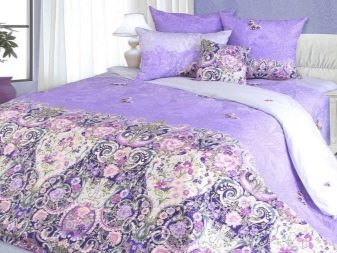
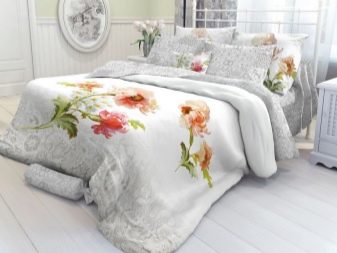
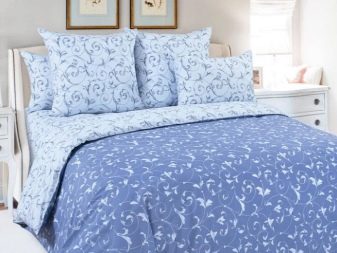
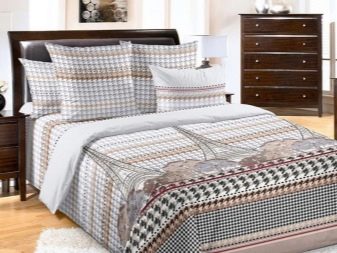
Care Tips
Percale requires extremely careful care, therefore, if you decide to purchase a set from this cloth, do not forget about the peculiarities of its operation and washing.Firstly, when cleaning percale, it is strictly forbidden to use any bleach (both chlorine-containing and chlorine-free formulations). Secondly, the fabric cannot be boiled. Thirdly, washing is allowed only at a temperature not exceeding 45 degrees. In addition, the material absolutely does not tolerate pre-soaking and washing with a product designed to remove stains.
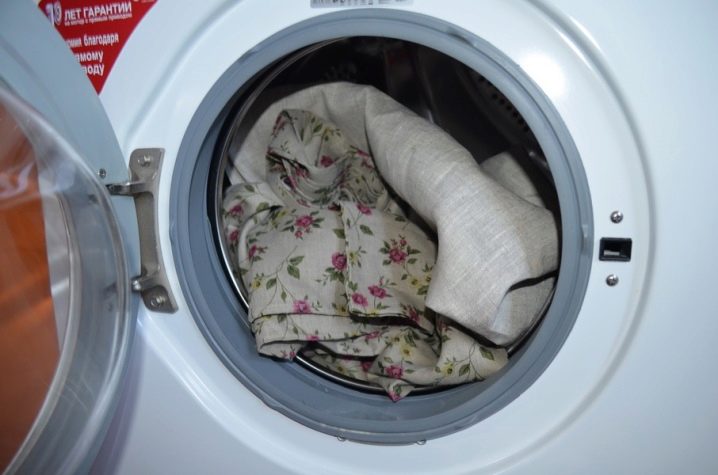
Before you start washing, you should let the laundry lie down in a cool place. Only then can it be put into the drum of the washing machine. Keep in mind that when wet, the fabric wrinkles a lot, therefore, hang the laundry for drying strictly horizontally or vertically, after carefully straightening it. Of the advantages, it can be noted that the linen is absolutely not afraid of the sun's rays, so it can be dried on the sunny side. The kit will not fade when exposed to ultraviolet light. When ironing, do not set the iron to maximum. The highest permissible temperature is 140 degrees.
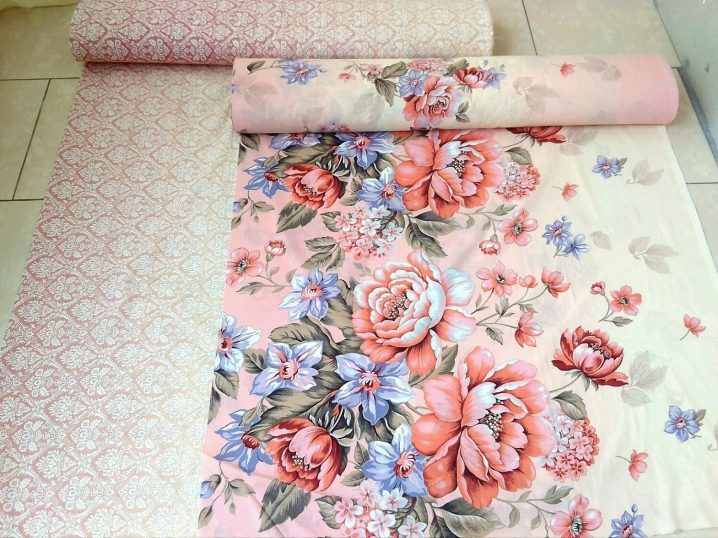
Reviews
Reviews of percale bedding are the most positive. Most consumers point out that it is very comfortable to sleep on such underwear. Percale is pleasant to the body, it is gentle, light and airy, it allows the skin to "breathe". Users note that percale warms very well on cold autumn and winter nights, but in the summer, contrary to the manufacturers' statements, it is still worth using other materials, since it can be hot.
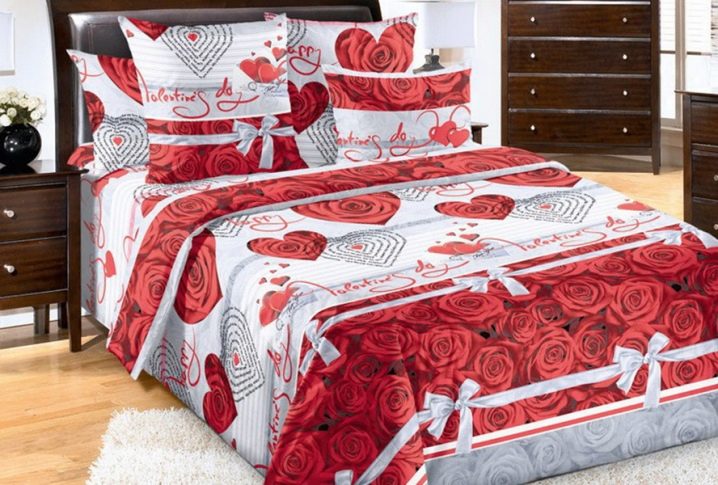
The products are ideal for protecting sofas and mattresses - the material does not allow dust to penetrate inside, thereby contributing to the hygienic cleanliness of the sleeping set. The pillow in the percale pillowcase does not prick as it is completely impervious to feathers. A very important advantage is that the material does not get wet from a sweaty head, so the underwear is especially suitable for young children, who, as you know, have significantly increased night sweats. Products do not wrinkle, even if people sleep very restlessly, and the kits can be used for a long time.
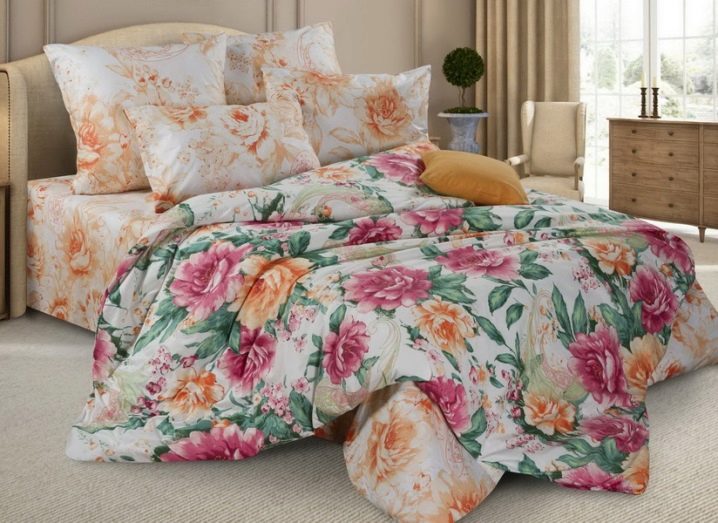
Many users compare percale to poplin. Poplin is a canvas that is also very often used for sewing bed linen. It is a combination of cotton and silk and has a small rib. Visually, one canvas is significantly different from the other. Percale is smooth, while poplin has a more embossed texture. At the same time, both materials are durable, natural and pleasant to the body. That is why consumer reviews do not give an unambiguous answer to the question of which of the two types of linens should be preferred when choosing bedding sets.
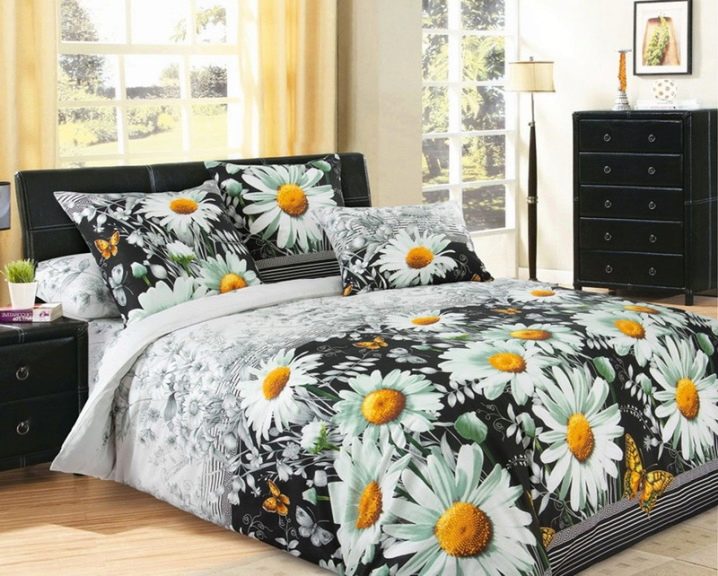
But when compared with satin, the choice is much easier. Despite the fact that satin has a glossy surface and pronounced shine, this material is extremely short-lived. It wears out quickly, wears out, the color and shine fade with frequent washing. That is why consumer reviews unanimously agree on the advantages of percale fabric - such kits are more practical and durable. Some housewives also compare percale and calico. Both fabrics are 100% cotton, nevertheless, coarse calico is coarser and rougher to the touch than percale, in addition, it is much less durable. On the other hand, it also allows air to pass well and at the same time costs several times cheaper, therefore it is generally available, which cannot be said about the canvas considered in the article.
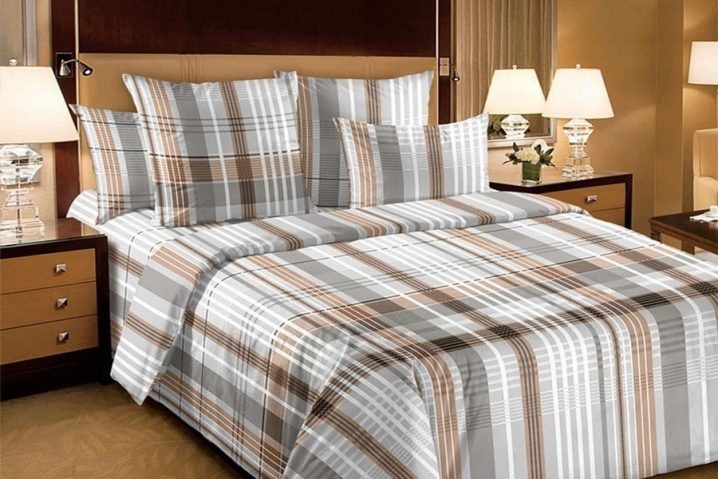
In general, any comparison with other cotton materials clearly speaks of the advantages of percale, however, the high cost of the canvas does not allow most of our compatriots to purchase such sets for themselves and other members of their family.
In conclusion, it is worth noting one valuable piece of advice from the owners of quality bedding. Unfortunately, like all expensive materials, percale is often counterfeited.An inexperienced buyer cannot visually distinguish one canvas from another, therefore, at the exit, he receives a short-lived matter for fabulously high money. In order not to be deceived, carefully examine the weaving of the canvas before buying. If the threads in it are connected by means of a cruciform or circular weave, then this is a low-quality imitation. It is better to refuse to buy it.
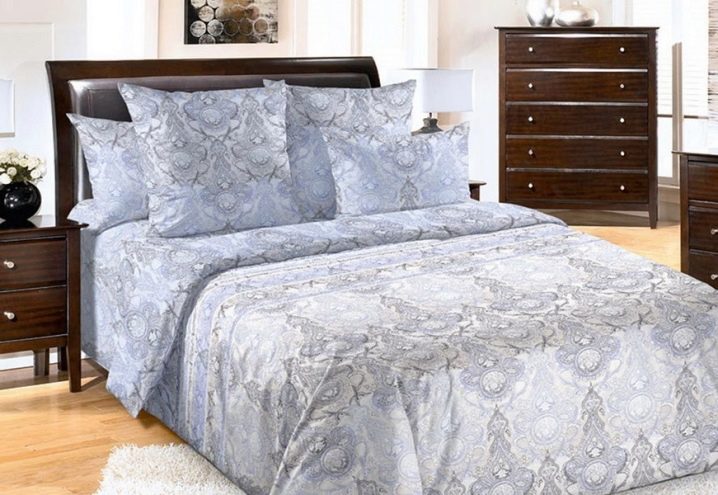
For information on how to properly iron percale bedding, see the next video.













The comment was sent successfully.